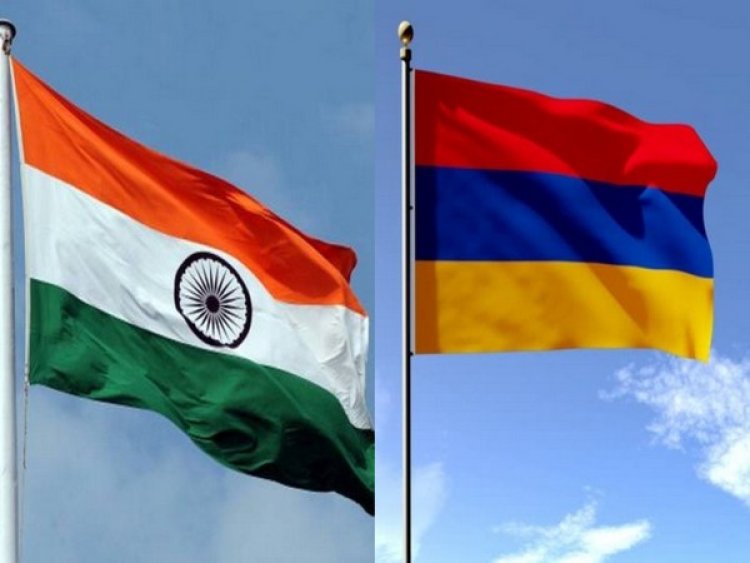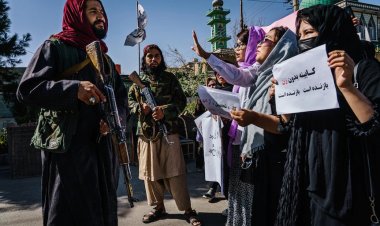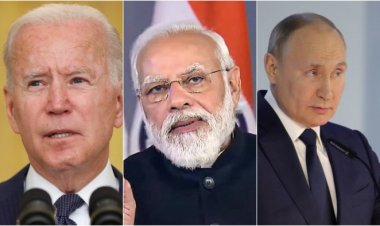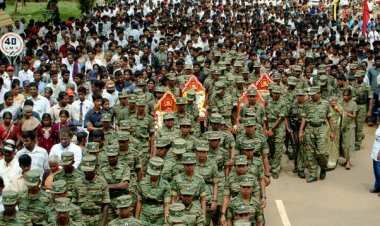Civilisational Linkages Between India and Armenia: An Exploration
In a collaborative effort, Network State international interns from the Usanas Foundation have undertaken a research project for the Network State, exploring the rich tapestry of civilizational linkages between India and Armenia. The project aims to uncover and document the historical, cultural, and economic ties that have bound these two ancient civilizations together through the ages

Written By: Preeti Khenta, Nikita Anand, Satyansh Tomar
During the recent visit of an Armenian envoy to India, Youri Babakhanian emphasized the need to “institutionalize” the political cooperation between the two countries into a long-term partnership. This comes as no surprise, given the extensive historical ties and civilizational partnerships that exist between Armenia and India. In recent years, the level of cooperation between the two countries has grown rapidly, particularly in defense and security. India has emerged as a significant foreign policy partner for Armenia, primarily due to its substantial contributions to Armenia’s defense capabilities and the potential for collaboration on Armenia’s strategic and economic growth. The Indian partnership has proved to be an essential asset for Armenia, given India’s expertise and resources in various sectors. Consequently, the India-Armenia partnership has become a vital aspect of Armenia’s foreign policy agenda, and its significance is expected to grow in the future.
In his special remarks during the Maharana Pratap Annual Geopolitics Dialogue 2024, the Ambassador of Armenia to India, Vahagn AFYAN, highlighted the historical connections between the two nations and the people-to-people exchange that occurred during ancient times. The event was organized by the Usanas Foundation and co-hosted by the Ministry of External Affairs. The Ambassador emphasized the deep-rooted ties that exist between the two countries and the potential for further strengthening bilateral relations. He also discussed the significance of cultural and economic exchange between the two nations, which could help to foster greater understanding and cooperation. India and Armenia share many commonalities, including their status as civilizational states with thousands of years of recorded history. Christianity, for instance, reached these states several years before it reached Western Europe – Saint Thomas preached the Gospel in India, while Saints Bartholomew and Thaddeus did the same in Armenia.
In 1904, James Kennedy published an article in the Journal of the Royal Asiatic Society titled “The Indians in Armenia 130 B.C – 300 AD.” The article recounts the tale of two Indian chiefs named Gisanê (also known as Kisanê or Kishan) and Demetr (also known as Témétr or Ganesh). These chiefs rebelled against King Dinaskhé (also called Dinaskey or Kannuj), but unfortunately, their rebellion failed. As a result, they fled westward with their clan to seek refuge with the Armenian monarch. The monarch granted them the canton of Tarôn, which is now located in Turkey, as their new residence. Here, they founded the town of Vishap, or the Dragon, which became the first Indian settlement in Armenia. The sons of Gisanê and Demetr, Kouar (also known as Guĕvar’), Meḷtes (also known as Meghtes), and Hoṛian, continued to hold the canton of Tarôn and divided the land among themselves. They founded three villages that were named after them – Kouarkh, Meḷtes, and Hoṛiankh – and erected two temples on Kharkhê, a grassy hill with woods and springs overlooking the Euphrates, which became the sacred seat and rallying point of the clan. The descendants of Kouar, Meḷtes, and Hoṛian were the priests of the idols, and twelve villages were assigned to maintain the temple service.
Kennedy concludes that the Indians in Armenia were non-Aryans due to their dark skin and plain features and that they fled to Armenia during the reign of Valarsaces (149-127 B.C.) when the Śakas were invading and Greek princelings were harrying Kabul, the northwestern Punjab, and the Indus Valley. The Indians in Armenia were likely worshippers of the snake, as evidenced by their first town’s name – Vishap, the Armenian equivalent of Nagpur. This worship is still prevalent in the Punjab, Kashmir, and Indus Valley regions.
According to historical accounts, Armenians are believed to have migrated to India during different periods in history. One account suggests that the migration took place during the reign of the Assyrian warrior queen Semiramis circa 2000 BC. Armenians also came to India during Alexander the Great’s conquest of Afghanistan, which was aimed at expanding his empire into India.
Thomas Cana is the first Armenian to have landed on the Malabar Coast in 780 AD. The first guide book to Indian cities in Armenian was written in the 12th Century
The medieval ages and the early part of modern history were arguably the most glorious and prosperous periods in the history of Armenians in India. During the Middle Ages, Armenian towns like Artashat, Metsbin, and Dvin were hubs for barter trade with India. Indian merchants bought stones, herbs, and finely woven textiles, exchanging them for hides and vibrant dyes produced in Armenia. This trade then flourished under the Mughal Empire from 1526 to 1857. One of Akbar’s wives was also an Armenian called Mariam Zamani Begum, which led to Akbar’s interest in increasing his relationship with the Armenians. Akbar, seeing the Armenians’ talent and honesty in their business dealings, granted Armenians special privileges, including religious freedom and opportunities, so that they could serve in his empire within their capabilities and effectively. The Armenian community was good not only in trade but also as artisans, contributing to craftsmanship in areas like gunmaking and printing.
Except for the Mughal Empire, Armenians also had a trade monopoly on the trade routes that connected India and West Asia to Manila, which was a key Spanish outpost during that time. They made the flow of spices, silk, and gems easier. In the 16th Century, Armenian Communities emerged in Kolkata, Chennai and Mumbai and Agra where the first Armenian Church was consecrated in 1562. The Holy Church of Nazareth, erected in 1707, repaired and embellished in 1734 is the biggest and the oldest Armenian Church in Calcutta. Madras became the centre of trade where the first ever Armenian language journal “Azdarar” was published in 1794. A prominent figure of that era, Coja Petrus Uscan, a philanthropist who had experience in the trade in the east, funded many Armenian landmarks in Madras.
During the 18th century, Shahamir Shahamiryan, a prominent Armenian public figure living in India, authored Vorogayt Paratz (Snare of Glory), the first constitution of Armenia. This constitution was influenced by the American and French revolutions and was published towards the end of the century. It comprised 521 articles and provided a blueprint for the creation of a new Armenian state. The constitution combined traditional Armenian law with the principles of the Enlightenment, including provisions for government structure, civil and criminal law, and the rights, freedoms, and obligations of citizens, all based on equality before the law.
From the 16th century, Armenians from Persia formed a significant trading community in Surat, the most active Indian port of that period. The port had regular maritime traffic of merchant vessels from Basra and Bandar Abbas. In Surat, the Armenian community built two churches and a cemetery, with one tombstone dating back to 1579 AD bearing Armenian inscriptions. The second church, dedicated to Virgin Mary, was built in 1778 AD. A manuscript in Armenian language, dating back to 1678 AD and currently preserved in the Saltikov-Shchedrin Library in St. Petersburg, contains an account of a permanent Armenian colony in Surat.
Armenian merchants played a pivotal role in trade between India and West Asia, extending their reach to Manila, a key Spanish outpost at the time. This enterprising community secured permission from the East India Company to establish their first church in Chennai around 1772. Initially constructed with timber in the present High Court area, the church received a grant of 50 pounds from the company to support its construction. This act of support likely encouraged further Armenian settlement in and around the area for trade.
Although most Armenians in India came for trade, some pursued other activities. Given their proficiency in Persian and familiarity with Islamic culture, many became interpreters, emissaries, and informers for various European trading companies.
India and Armenia have enjoyed a mutually beneficial relationship since the post-Soviet era, when India recognized Armenia and established diplomatic ties. In contemporary times, this relationship has been characterized by warmth, cordiality, and a convergence of views on several issues of mutual interest. To further strengthen the bond between the two nations, there is a need to increase people-to-people interactions, following the ancient ties that have existed between India and Armenia.
Preeti Khenta is a Senior Program Coordinator at Usanas Foundation and a Ph.D. candidate at the Jindal School of International Affairs, O.P Jindal Global University. She holds a Master’s degree in Diplomacy, Law and Business. Her research areas include Islamic Theology, Terrorism and Peace and Conflict studies.
Nikita Anand is pursuing a Master’s in Diplomacy, Law, and Business from O.P Jindal Global University. She is the Program Assistant at the Usanas Foundation. Her research area lies in Foreign Policy and India’s domestic politics.
Satyansh Tomar is a final year student of MA in Diplomacy, Law and Business from O.P Jindal Global University with a specialization in national security and defence. He has a keen interest in psyops, war and strategic studies.
Disclaimer: This paper is the author's individual scholastic contribution and does not necessarily reflect the organization's viewpoint. The article was first published in Network State.

























